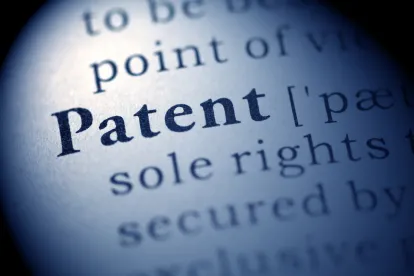The US Patent & Trademark Office (PTO) Director vacated Final Written Decisions issued by the Patent Trial & Appeal Board that presented a sua sponte construction of a claim term in dispute, holding that the parties were not provided adequate notice of the Board’s new construction. Assa Abloy AB v. CPC Patent Technologies Pty., Ltd., IPR2022-01006, -01045, -01089 (PTAB Decision Review Mar. 15, 2024) (Vidal, PTO Dir.)
The Board issued Final Written Decisions in three inter partes reviews (IPRs), holding that the petitioner failed to demonstrate that any of the challenged claims were unpatentable. The petitioner requested Director Review, raising three issues concerning the Final Written Decisions’ treatment of the claim term “biometric signal”:
- The Board’s construction newly added a limitation that neither the petitioner nor the patent owner proposed
- The Board’s construction was erroneous
- The Board inconsistently addressed this claim limitation among the IPRs at issue.
The Director decided that review was appropriate.
The Director explained that in view of the petitioner’s and patent owner’s divergent post-institution positions regarding this limitation, the Board had authority to construe “biometric signal” even though its institution decisions indicated that the Board would give this claim term its plain and ordinary meaning. The petitioner argued that the term meant “the input and output of the biometric sensor,” and the patent owner argued that the term meant a “physical attribute of the user” (i.e., a fingerprint, facial pattern, iris, retina or voice). The Board held that it meant “a physical or behavioral biometric attribute that provides secure access to a controlled item.”
The Director vacated and remanded the Final Written Decisions, explaining that the Board failed to provide the petitioner and the patent owner reasonable notice of its new construction or the opportunity to present arguments concerning it, as required under the Administrative Procedure Act (APA). The Director noted that neither party requested the Board’s inclusion of a construction that required an attribute of the claimed signal to “provide[] secure access to a controlled item” and concluded this was the sort of “difficult to imagine” sua sponte construction that the US Court of Appeals for the Federal Circuit held (in its 2021 decision in Qualcomm v. Intel) lacked sufficient notice if appearing for the first time in a Final Written Decision.
The Director instructed that on remand the Board should authorize the petitioner to file a supplemental briefing that addresses the Board’s construction and its application to the asserted prior art and authorize the patent owner to respond to the petitioner’s supplemental briefing.
The Director also noted that the patent owner’s proposed claim construction in the IPRs was similar to the construction that the Board adopted in its institution decisions in other IPRs challenging two of the patents at issue. In recognition of this situation, the Director also invited the petitioner, in its supplemental briefing, to address the perceived inconsistencies in these claim constructions.>



 />i
/>i
